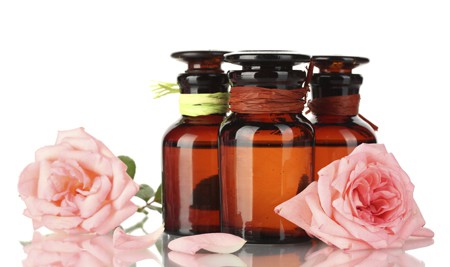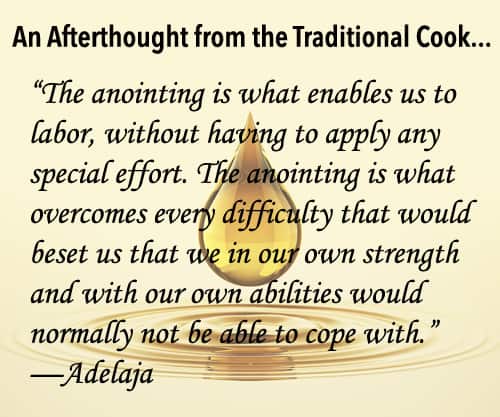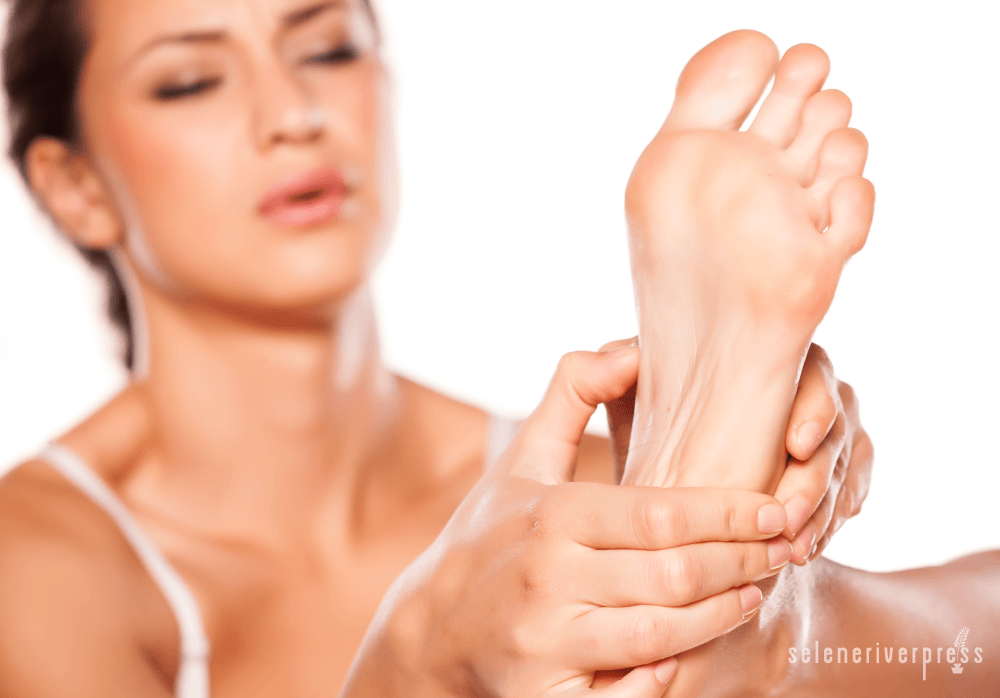“Essential substances, including healing fats, must be obtained in optimal quantities to maintain optimal health.”
—Udo Eramus
Have you perchance ever wondered why it is that even when you eat well and use affirmations, prayer, and meditations, you’re still, after so much effort, unable to resolve some persistent health issue? Could the practice of anointing be missing in your life? Let’s explore this ancient tradition a bit, and maybe, just maybe, you’ll find that this is the missing piece of the puzzle—and the reason you’re not having success.
The word anoint brings to mind traditions that have existed from the very earliest times of our history. The power of anointment with oil has been used in healing, religious consecration, embalming the dead, and other ritual, worship, and hygienic practices. It cannot be dismissed as a short-term fad.
By all accounts healing fats (more easily identified as oils in this context) have graced humanity throughout our long existence. In our avid search for foods and supplements to bring about good health, both physically and emotionally, we often don’t study or frequently use oils for the specific practice of anointing ourselves and/or our family. This may result in unsuccessful efforts to bring about healing.
S.G.F. Brandon explains in Belief, Rituals, and Symbols of Ancient Greece and Rome (Man, Myth, and Magic) that the religious custom of using anointing oils and unguents has its origins in the daily hygienic practices of people who accorded special meaning to different oils, salves, and ointments in their rituals. It’s my hope that I can bring into your life a brief understanding of some of these precious mystic oils and ointments, as well as a few medicinal oil recipes.
How is anointing different than just getting a massage? Historically, anointing meant that the oils used and the intentions for their use had a very special purpose with physical, emotional, and spiritual effects on body, mind, and spirit. In some cases the anointed one was sworn to perform and/or hold a special office or duty from that point on. (The intended use of an anointing oil carried a special energy, so please make a mental note of this as you read on.)
Intention is the byword when it comes to using oils in this fashion. So sit back, apply a bit of your favorite essential oil on your wrist, and read on. Yes, aroma can be part of the mystery that surrounds us when we want to comprehend on a deeper level, and this anointing therapy I’m sharing with you is, in fact, meant to hopefully bring about dramatic effects on that deeper level of your being.
Intention is the fundamental cause of manifestation: There are different levels of intention, and those who may be blessed or anointed for some specific reason may have energies we cannot either understand or compete with. Nevertheless, we’re all energetic beings, and depending on the level of attention you place on your intended purpose, you too may be given a pathway to some deeply desired outcome that would otherwise not be possible with other therapies.
For starters, and to get back down from this cloud of mysticism and intrigue, let’s ask ourselves a question: doesn’t it make good sense to take time for our own special daily rituals, invoking with good intentions the gift of good health; shedding off old hurts, traumas, and pains; receiving spiritual guidance, and, in return, bringing about what we deeply desire for ourselves or others? I’ve experienced this, and I’m convinced that our intentions for the good of others—even those we may be bitter with—is also paramount in receiving what we want for ourselves.
Does anointing work? History and many healing miracles tell us yes! They also work for a mother or father anointing a child or a caretaker or relative anointing a sick friend or relative. Nothing but good news as you read on.
Let’s start with a small bit of history.
Egyptians: Ancient Egyptians made much use of perfumed ointments and wore cones of perfumed ointments on their heads, which would gradually melt in the heat and anoint their bodies. They commonly used oils for festal occasions and performed rituals in the temples for the pleasure of the gods.
Greeks and Romans: They utilized oil and perfumed oil in their celebrated baths and massages.
Eskimos: Restricted to animal resources, Eskimos rubbed the oil of seals onto their skin to keep it smooth and supple and to help fortify themselves against the elements.
Judeo-Christians: Anointment with oil conveys a religious significance in baptism and in rites of the sick and dying. Occurs in the Old Testament in the consecration of a high priest. Also used for hygienic purposes.
The Science of the Skin
The paragraph below from Anoint Yourself with Oil for Radiant Health by David Richard addresses the importance of oil as a protective barrier. This was my inspiration to write about healing oils and anointing:
“As a protective barrier, our skin depends upon a thin film of oil. This film is common to both plants and animals. Plants store oil in the protective coating of their seeds. Animals maintain a coating of oil on their skins. In both cases, the function of the oil is to keep toxins and harmful bacteria outside and keep valuable nutrients and fluids within. Since the fatty acids in sebaceous oil have a mildly negative PH value, they also help to support the acid mantle of the skin which is a primary deterrent to potentially harmful bacteria, viruses, fungi and other microbes.”
Important Basics for Anointing Oil
Before I actually list some of the more nutrient dense and healthy oils for use in anointing, I must note that it’s essential that oils used for this purpose are organic, virgin, and unrefined. They must be intended for human consumption and not had their nutrients processed out of them through the application of heat or chemicals. Remember, what you put on your skin will also be absorbed into the body/bloodstream. Don’t cheat yourself by buying cheap processed oils.
Method of Anointing Ourselves
- You should keep your oils in the refrigerator so they don’t go rancid. Therefore, an oil warming appliance is appropriate.
- The best time to use oils is immediately after a nice shower, either when first getting up or going to bed. You want your skin slightly damp and warm so your pores can more readily absorb the oils.
- Sitting on a stool and using both hands, begin with the bottom of your feet, and then move to the top of your feet. Using upward strokes, work your way up your legs, stomach, arms, and finally your face.
- The sacrum (spine), which carries our body weight, is a critical and very important place that will need anointing. If you live alone, look into purchasing a nice lotion/oil applicator for your back.
Anointing Your Body with Oil
“For maximum benefit, it’s of paramount importance to sit quietly for a few minutes and form your intention(s). You may even say a prayer. Let go of your worries, let go of your unhappiness about your position or place in life, and let go of your old hurts. Be grateful for your surroundings and your body even if it’s not perfect at this moment. It is, after all, an anointing—and not just a casual massage.”
—Maria Atwood, CNHP
How to Mentally or Verbally Form Your Intentions
- I (say your name) anoint myself with the intention to heal my (name your condition).
- I (say your name) anoint myself with the intention of forgiving (name the person).
- I (say your name) anoint myself with the intention of having (name what you desire).
A Few of My Favorite Oils for Anointing Purposes
Olive oil – The oil extracted from the olive tree is rich in nutrients and also helps to develop the equilibrium of fats in the body. Olive oil is known to have defensive properties and safeguards the digestive system. It’s also beneficial for arid skin. When applied externally, sticky olive oil is a good carrier oil for essential oils. Read more here.
Sesame seed oil – People in many cultures have regularly employed sesame oil for culinary purpose for more than 2,500 years. Despite this, many have only become aware of the health benefits of sesame oil during the last decade. Sesame oil is extracted from sesame seeds and provides us a copious resource of monounsaturated fats and polyunsaturated fats, as well as numerous minerals and vitamins. Read more here.
Almond oil – The oil extracted from almonds is odorless and possesses exceptional nourishing and softening properties. Almost half the weight of almonds comprises this oil. Used independently, it’s an excellent massage oil, and it helps to keep one fit and fine. Almond oil is wispy and is easily soaked up by the skin, making it effective in relieving skin disorders such as itching and eczema. Almond oil also acts as an effective carrier oil for other essential oils. Read more here.
Pumpkin seed oil – In folk medicine, remedies made from pumpkin were traditionally used to treat disorders such as kidney inflammation and intestinal parasites. Disorders of the prostate gland and problems like an irritable bladder can also be treated using both pumpkin seeds and oil. These days, the greatest use for pumpkin seeds is in the treatment of benign prostatic hyperplasia (BPH). Read more here.
Borage oil – Since ancient times, borage has been known for its property to drive off melancholia and inducing gladness or courage. Borage was called the “herb of gladness” by the Welsh. Read more here.
 Evening primrose oil – This extracted oil is comprised of about nine percent of a useful chemical compound called gamma-linolenic acid (GLA). The prostaglandins (active lipid compounds) in the human body are actually synthesized from precursors such as GLA. In fact, a prostaglandin called E1 is dependent on the presence of GLA in the body. This chemical compound thus plays a very important intermediary role along the biosynthetic pathway, first in forming an essential fatty acid called cis-linoleic acid and then in the formation of the full prostaglandin compound. Read more here.
Evening primrose oil – This extracted oil is comprised of about nine percent of a useful chemical compound called gamma-linolenic acid (GLA). The prostaglandins (active lipid compounds) in the human body are actually synthesized from precursors such as GLA. In fact, a prostaglandin called E1 is dependent on the presence of GLA in the body. This chemical compound thus plays a very important intermediary role along the biosynthetic pathway, first in forming an essential fatty acid called cis-linoleic acid and then in the formation of the full prostaglandin compound. Read more here.
Rose hips seed oil – The rose hips, or fruits, of the different varieties of roses enclose a high quantity of vitamin C, and hence they’re of great value to practitioners of herbal medicine. Rose hips are known for properties that help in preventing and also healing scurvy (a disease caused by vitamin deficiency). Rose hips of the rose plant, including the flowers and even the petals, are used in tinctures, syrups, essential oils, creams, lotions, and rosewater. They can also be beneficial as a massage oil and for gargle and decoction. Read more here.
Argan oil – Compared to olive oil, argan oil has a somewhat darker hue with a shade of red. Apart from its use in cooking, argan oil possesses a number of therapeutic properties and can be used to treat various health conditions. Argan oil is associated with improved circulation, lower blood cholesterol levels, and a fortified immune system. Cosmetic manufacturers have also shown some interest in argan due to its emollient properties. Read more here.
Other Fats I Highly Recommend
Along with the oil recommendations above, I want to mention two other saturated fats I think you’ll find highly nourishing. The first is a favorite of mine: homemade nutrient dense tallow mixed with one of my essential oils. I use this each morning and find a profound benefit to my skin. I also know for certain that I’m nourishing my body, but instead of chemicals my skin is benefiting from the many nutrients inherent in grass fed beef tallow! Interested in making your own tallow? Read my blog post “Render Your Own Nutrient Dense Beef Tallow.”
Another of my favorite saturated fats for the purpose of anointing is coconut oil laced with a healing essential oil. When applied to the skin, coconut oil protects from microbial infections that can get into open wounds or even enter the body through the pores. You can find more information on how to use coconut oil for your skin here.
Medicinal Oil Recipes from an Old Issue of Herb Quarterly
Balm of Gilead Oil
Balm of Gilead oil is beneficial for disinfecting wounds, easing bruises and swellings, and treating burns. Pick cottonwood buds in very early spring.
Ingredients
½ jar freshly picked cottonwood buds
Olive oil to fill jar
Instructions
- Cover mason jar with paper towel and screw on the lid. (If using a regular jar, use a rubber band). The buds will expand and water will evaporate out, so you may want to put the jar on a small plate in case it overflows.
- Stir every day for a few weeks, making sure the buds are covered with oil. If buds are sticking out, it will most likely go moldy.
- In six weeks or longer, strain it out. (Some soak for up to a year!) Store balm of gilead in small bottles or containers.
- Rather than clean it, you can keep the seasoned jar for next year’s batch, if you like.
St. John’s Wort Oil
A beautiful red color, St. John’s Wort oil has many applications. As an agent that heals nerve endings, it’s useful for burns, shingles pain, and frostbite. It can also be used as a general wound healer. Employ for massage as well.
To make St. John’s Wort oil, pack flowers and buds tightly in a glass jar with olive oil to cover. Allow to sit four weeks.

Photos from iStock/VladimirFLoyd (at top), serezniy (oil bottles with roses), and BlackJack3D (oil droplet)
Note from Maria: I am a Certified Natural Health Professional, CNHP, not a medical doctor. I do not diagnose, prescribe for, treat, or claim to prevent, mitigate, or cure any human diseases. Please see your medical doctor prior to following any recommendations I make in my blogs or on my website.




Hi,
Thanks for sharing these amazing tips and these amazing oils. it has been a great help. keep sharing and caring.
http://organichealthplanet.com